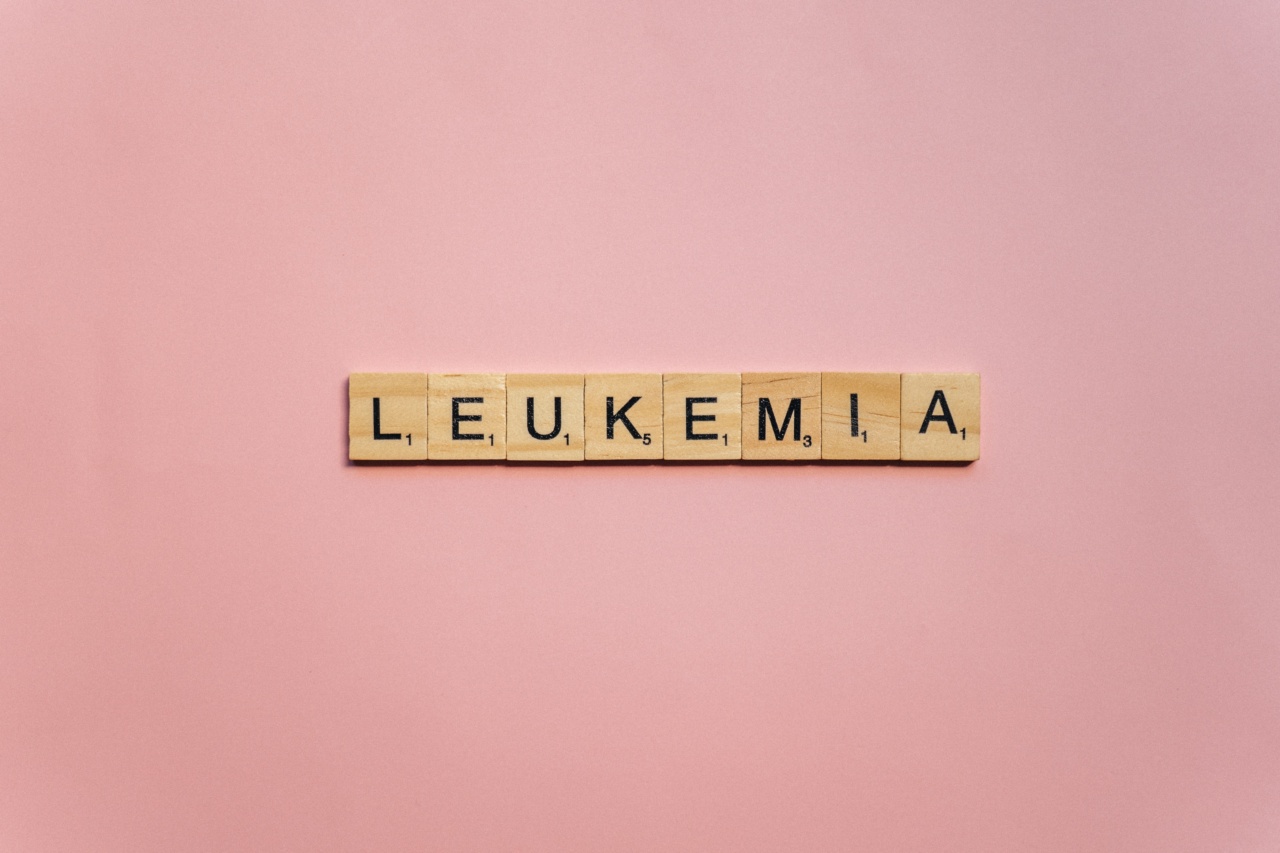Leukemia is a cancer of the blood cells, which starts in the bone marrow, where blood cells are created. There are several types of leukemia, classified by the type of blood cells affected and how quickly the disease progresses.
Treatment options for leukemia depend on several factors, such as the type of leukemia and the stage of the disease. However, advancements in medical technology and research have led to innovative treatments that offer new hope for people diagnosed with leukemia.
1. Immunotherapy
Immunotherapy is a type of cancer treatment that uses the immune system to fight cancer cells. This treatment works by using substances made by the body or in a laboratory to boost or restore the immune system’s ability to attack cancer cells.
Several types of immunotherapy have shown promising results in treating leukemia, such as checkpoint inhibitors, chimeric antigen receptor (CAR) T-cell therapy, and bispecific antibodies.
2. Targeted Therapy
Targeted therapy is a type of cancer treatment that works by targeting specific genes, proteins, or other factors that help cancer cells to grow and survive.
This type of treatment is often used in combination with other treatments, such as chemotherapy. Several targeted therapy drugs have been approved by the US Food and Drug Administration (FDA) for the treatment of various types of leukemia, such as imatinib, dasatinib, and nilotinib.
3. Stem Cell Transplantation
Stem cell transplantation, also known as bone marrow transplantation, is a procedure that replaces the diseased bone marrow with healthy stem cells.
These stem cells can be from the patient’s own body, a donor’s body, or from umbilical cord blood. This type of treatment is often used for people with advanced or high-risk leukemia who have not responded to other treatments.
However, stem cell transplantation can be a risky procedure and may have side effects, such as infections and graft-versus-host disease (GVHD).
4. Chemotherapy
Chemotherapy is a type of cancer treatment that uses drugs to kill cancer cells. This treatment can be given orally (by mouth) or through an injection.
Chemotherapy drugs can be used alone or in combination with other treatments, such as radiation therapy. Although chemotherapy can be effective in treating leukemia, it can also have side effects, such as nausea, hair loss, and a weakened immune system.
5. Radiation Therapy
Radiation therapy is a type of cancer treatment that uses high-energy radiation to kill cancer cells. This treatment can be given externally, using a machine outside the body, or internally, using a radioactive substance.
Radiation therapy can be used alone or in combination with other treatments, such as chemotherapy. Although radiation therapy can be effective in treating leukemia, it can also have side effects, such as fatigue and skin irritation.
6. Gene Therapy
Gene therapy is a type of experimental treatment that involves manipulating genes to treat or prevent diseases. This treatment works by inserting or changing genes in the body’s cells to treat or prevent diseases such as cancer.
Several types of gene therapy have shown promising results in treating leukemia, such as CAR T-cell therapy.
7. Precision Medicine
Precision medicine is an approach to patient care that involves using genetic and other information to tailor treatments to individual patients.
This approach can help to identify the best treatment options for a patient’s specific condition and genetic makeup. Precision medicine has shown promising results in the treatment of leukemia.
8. Clinical Trials
Clinical trials are medical research studies that involve volunteers and test new treatments, drugs, or devices. Clinical trials are essential for advancing medical technology and finding new treatments for diseases such as leukemia.
By participating in clinical trials, patients can gain access to innovative treatments that are not yet available to the general public.
9. Supportive Care
Supportive care is a type of treatment that focuses on managing symptoms and improving quality of life for people with leukemia. This type of treatment can include pain management, emotional support, and nutrition counseling.
Supportive care is an important part of the overall treatment plan for people with leukemia and can help to improve their quality of life.
10. Telemedicine
Telemedicine is a type of healthcare delivery that uses technology, such as video conferencing, to deliver remote medical care.
This type of treatment can be especially beneficial for people with leukemia who live in remote areas or are unable to travel to their healthcare provider’s office. Telemedicine can help to improve access to care and reduce the burden of travel for patients and their families.


























